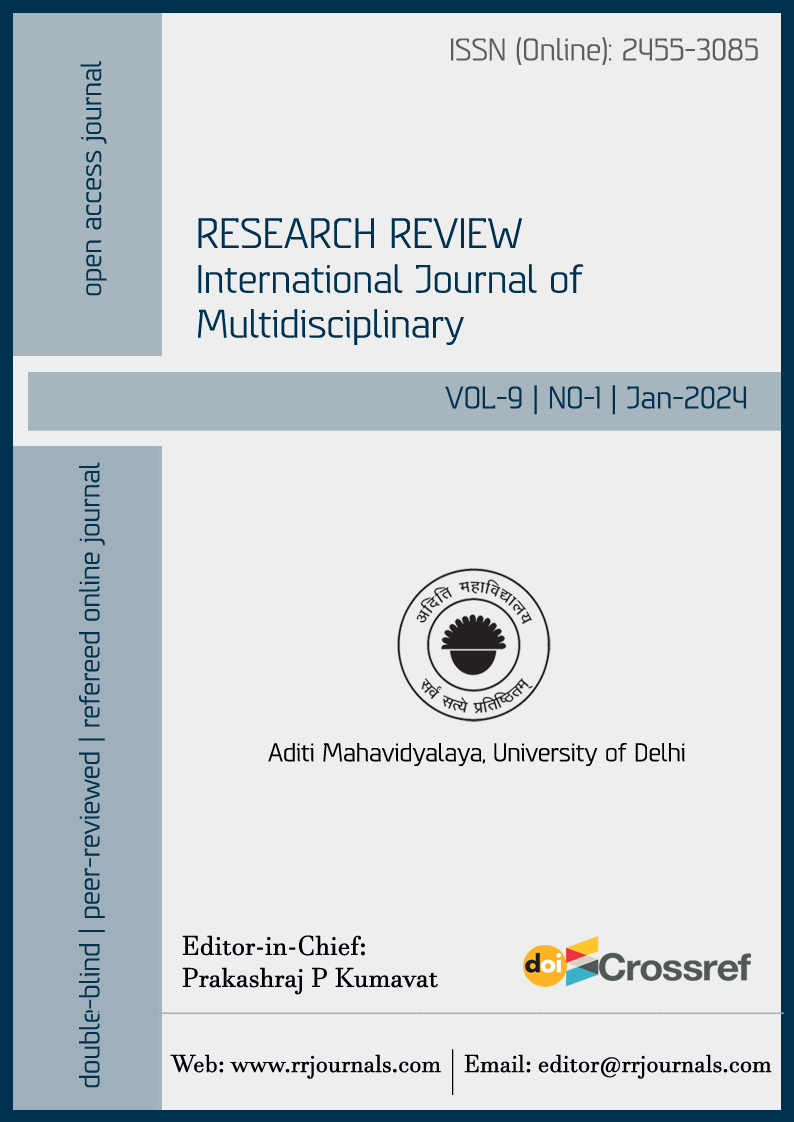The Influence of Coordination on Organizational Processes
DOI:
https://doi.org/10.31305/rrijm.2024.v09.n01.015Keywords:
Organization, Influence, Process, Coordination, ManagementAbstract
The focus of this research paper is to analyze work of organization, specifically focusing on its components from a theoretical perspective. It also discusses various aspects of organization, such as the allocation of tasks, the arrangement of the organizational framework, the establishment of a hierarchical structure, and the facilitation of coordination, and their relevance in organizational activities. The aim of study is to suggest strategies that can streamline to manage personnel. This research paper emphasizes the vital role of coordination within a firm's operations and investigates the key regulations, components, and aspects of practical implementation. With the constant advancement of technology and science, the relevance of work organization issues persists, as tools, techniques and methods must continuously adapt and enhance. To conclude this research paper provides a concise overview of the theoretical discoveries and juxtapose them with the outcomes of an empirical investigation carried out to present their final remarks.
References
Bannon, L.J. (1993). CSCW: An Initial Exploration, Scandinavian Journal of Information Systems, (5) pp. 3-24.
Berger, P. and T. Luckmann (1967). The Social Construction of Reality, Anchor Books, New York.
Bakanauskas A. and others. Management of Organizations. – Lithuania: Vytautas Magnus University 2011. – 432 p. - ISBN 978-9955-12-738-3
Bea F. X., Haas J. Strategic Management. Germany: Ebner &Spiegel, Ulm, 2005. – 601 p. - ISBN 3-8252-1458-3
Butkus F. B. Management for Everyone. - Vilnius: Eugrimas, 2008. – 165 p. - ISBN 978-9955-790-17-4
Choi, T., Hong Y. (2002). Unveiling the structure of supply networks: case studies in Honda, Acura, and DaimlerChrysler // Journal of Operations Management. Vol. 20 (5)
Danese, P. (2006). Collaboration forms, information and communication technologies, and coordination mechanisms in CPFR // International Journal of Production Research. 44(16)
Denning, P. and T. Winograd. (1996): Business – Process Mapping, in: T. Winograd (Eds.): Bringing
Design to Software, ACM, Addison-Wesley, New York.
Denzin, N.K. and Y.S. Lincoln (1994). Entering the Field of Qualitative Research, In: Denzin, N.K.
and Y.S. Lincoln (Eds.): Handbook of Qualitative Research, Sage
Fayol H. Administration Theory and Practice. Vilnius: Eugrimas, 2005. – 135 p. - ISBN 9955-501-91-X
Little B. A new spirit for fostering organizational success // Human resource management international digest. – Emerald Group Publishing Limited, 2012, vol.20, No 4, p. 40-44. - ISSN 0967-0734
March, J. and H. Simon (1958). Organizations, Graduate School of Industrial Administration, Carnegie Institute of Technology, John Wiley, New York.
Malone, T. (1987). Modelling coordination in organizations and markets // Management Science. Vol. 33 (10)
Mintzberg, H. (1983). Structure in Fives: Designing Effective Organizations, Prentice-Hall, New
Jersey.
Mintzberg, H. (1998). Five Ps for Strategy, In: Mintzberg, H., J.B. Quinn and S. Ghoshal (Eds.): The
Strategy Process, revised European Ed., Prentice-Hall, New Jersey.
Mintzberg, H. (1985). Structure in fives: Designing effective organizations. London: Prentice Hall International Book review,
Misevičius V. Introduction to Business Organization. Lithuanian Academy of Physical Education, 2010. – 170 p. - ISBN 978-609-8040-14-2
Schmidt, T. (2006). A review of structure in fives; Designing effective organizations. Thesis literature study, 1-14.
Seifert, D. (2003). Collaborative Planning, Forecasting and Replenishment: How to Create a Supply Chain Advantage. – New York: AMACOM
Stoner J. A. F. and others. Management. Printing and Information, 2005. – 662 p. - ISBN 9986-850-30-4
Tapscott, D. and A. Caston (1993). Paradigm Shift — The New Promise of Information Technology, McGraw-Hill Inc.
Taylor, J.R., C. Groleau, L. Heaton, and E.J. van Every. (2001). The Computerization of Work: A Communication Perspective, Sage Publications, Thousand Oaks, USA.
Thompson, J.D. (1967). Organizations in action – social science bases of administrative theory, McGraw-Hill.
Weick, K. (1979). The Social Psychology of Organizing, 2nd Edition, McGraw-Hill.
Winograd, T. and C.F. Flores (1986). Understanding Computers and Cognition: A New Foundation for Design, Ablex Publishing Corp., Norwood.
Vanagas P. Work Organization, rationing and pay for work. Kaunas: Technologija, 2009. – 385 p. - ISBN 978-9955-25-609-0
Downloads
Published
How to Cite
Issue
Section
License

This work is licensed under a Creative Commons Attribution-NonCommercial 4.0 International License.
This is an open access article under the CC BY-NC-ND license Creative Commons Attribution-Noncommercial 4.0 International (CC BY-NC 4.0).



